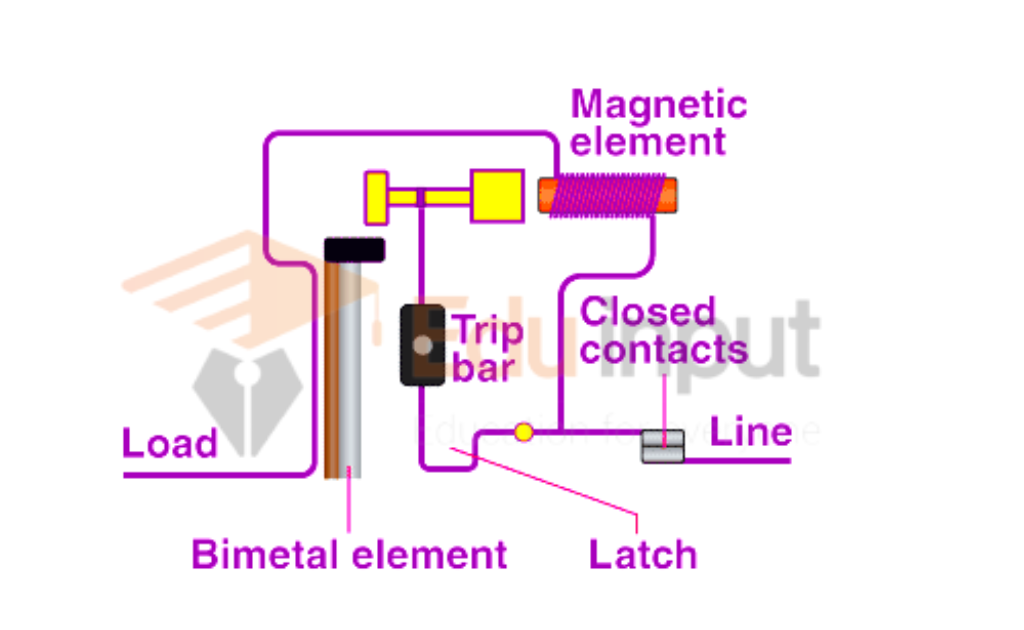What is a Power Inverter?-Definition, Input Voltage, Output Power, And Output Voltage
A power electronic device or circuitry that changes direct current (DC) to alternating current (AC) is called a power inverter.
What is a Power Inverter?
A power inverter is a device that converts the direct current to an alternating current. It is one of the most important and essential components of electrical appliances. It is an electronic device that is connected to a power supply.
The design of the specific device or circuitry will affect the input, output, and frequency of the power handling. The power provided by the DC source is more important than the power produced by the Inverter. A power inverter can be either completely electronic or a combination of mechanical effects and electronic circuitry.
The majority of power inverters are used in electrical power applications where high currents and voltages are present; circuits that perform the same function for electronic signals, which usually have very low currents and voltages, are called oscillators. The opposite function, converting AC to DC, is performed by circuits called rectifiers.
Input Voltage
A stable DC power source that is capable of supplying enough current for the intended power demands of the system is required for a typical power inverter device. The design of the transformer and the purpose of the transformer affect the input voltage.
Output waveform
Depending on the design of the circuit, a square wave, modified sine wave, pulsed sine wave, pulse width modulated wave, or sine wave can be produced. Square waves or quasi-square waves can be produced by common types of instruments. The total harmonic distortion is a measurement of the purity of a sine wave.
There are two basic designs for producing household plug-in voltage from a lower-voltage DC source, the first of which uses a switching boost converter to produce a higher-voltage DC and then converts it to AC. The second method converts DC to AC at the battery level and uses a line-frequency transformer to create the output voltages.
Output frequency
The standard power line frequencies, 50 or 60 hertz, are the same as the AC output frequencies of the power inverter device. There is an exception in designs for motor driving, where a variable frequency results in variable speed control. If the output of the device or circuit is to be further conditioned, then the frequencies may be much higher for good transformer efficiency.
Output voltage
Even when there is a change in the load that the power transformer is driving, the AC output voltage of the power transformer is usually the same as the grid line voltage at the distribution level. This makes it possible for the inverter to power many devices that are not standard line power. selectable or continuously variable output voltages are some of the features of some inverters.
Output power
An overall power rating is usually expressed in watts or kilowatts. This describes the power that will be available to the device the inverter is driving and the power that will be needed from the DC source. Smaller popular consumer and commercial devices that mimic line power can range from 150 to 3000 watts. The following properties are used by the follow-on circuit or device in some cases; not all inverter applications are solely concerned with power delivery.
Types of Power Inverter
According to the Output Characteristic, There are three types of power inverters.
- Square wave inverter.
- Modified sine wave inverter.
- Sine wave inverter.
Square wave inverter
The square wave is the output of the voltage for these inverters. All the other types of inverters are designed for a single wave supply, so this type is the least used among them. If we supply square wave to sine wave based appliance, it might get damaged or lose a lot of money. The application is very rare and the cost of this inverter is very low. It is possible to use simple tools with a universal motor.
Modified sine wave
The construction of this type of inverter is more complex than a simple square wave one but simpler than a pure sine wave one. The output of this transformer is not a pure wave or square wave. Some of the two square waves are what the output of the inverter is. The shape of the output wave is similar to that of a sine wave.
Sine wave
We get a very similar output to the utility supply with the output of the voltage being a sine wave. All of the appliances we are using are designed for the sine wave and this is a major advantage. This is the perfect output and gives a guarantee that the equipment will work correctly. The type of inverters that are used in residential and commercial applications is more expensive than other types.
Power Inverter Application
These are some important applications of inverters.
- DC power source usage
- Uninterruptible power supplies
- Electric motor speed control
- In refrigeration compressors
- Power grid
- Solar Inverter
- Induction heating
- HVDC power transmission
- Electroshock weapons
- Frequency conversion





Leave a Reply